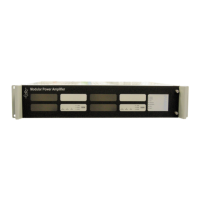iPAM400 – Product Manual
U-0629-0171.doc – Issue: 04 complete, approved
Page 11 of 138
2.1 Controller
The Controller is a sophisticated platform which provides all control and routing functions, supports the
ASL VIPA software suite, and provides a number of analogue audio and control interfaces for VoIP, PC/DVA,
and other advanced functions.
2.1.1 External Interfaces
The following external interfaces are provided:
• 1 x Ethernet port for IP connection.
• 2 x multifunctional audio/data ports.
Each port provides a balanced audio input, a RS485 interface, and a DC power supply (18-36 V). These
ports are for connection of either: an ASL microphone, ASL BMB01 Remote I/O Units, or other audio
sources such as background music. One can also be used for the incoming audio stream from the
optional DTMF (Dual-Tone Multi-Frequency) interface; see Section “2.5 Auxiliary Control”
(page 22).
Note that the BMB01 can share one port with an audio source, provided that this is not an ASL
microphone.
• 1 x RS232 port for connection of a PC for commissioning and diagnostic purposes.
• 1 x VGA port for commissioning and diagnostic purposes.
• 2 x USB ports (type A) on the rear panel for connection of peripherals such as memory sticks,
keyboards, etc., to aid in software upgrade and diagnostics.
2.1.2 VIPA Software Functionality
The VIPA software suite is being continually developed. At the time of the publication of this manual the
base functionality provided for the iPAM400 is as described in the following sections.
2.1.2.1 IP Connectivity
The iPAM400 provides 100 Mbit/s Ethernet connectivity over CAT5 cable with Control and Voice over IP
(VoIP) functions. This enables control of the iPAM400 and broadcast over an IP network from the ASL
PC/DVA System, other PC/DVA system, or a Customer Information System (CIS).
The transmission of audio between the iPAM400 and other VIPA units such as the VIPET IP Audio Controller
and the iPA400 Amplifier Mainframe uses PMC (Portable Media Carrier) protocol
1
capable of multicast
operation where there is one source and multiple simultaneous destinations. The iPAM400 and other VIPA
units can however be configured for unicast operation with one source to only one destination, on networks
that do not support multicast.
In multicast operation a star topology network with router and active switches that support layer 2 (MAC-
based) multicast is recommended for maximum bandwidth savings.
A private local network is recommended for secured data transfer. If required, connections across a shared
or open network should use a dedicated VPN (Virtual Private Network) in order to secure all data transfer.
Refer to “PMC Software Modules” Product Overview for further details; see Table 7 (page 132).
1
Standard IPv4 UDP multicast with IGMPv3, which is compatible with all modern desktop and server operating systems, such as
Windows, MacOS, Linux, Solaris, AIX, HP/UX, BSD, etc.

